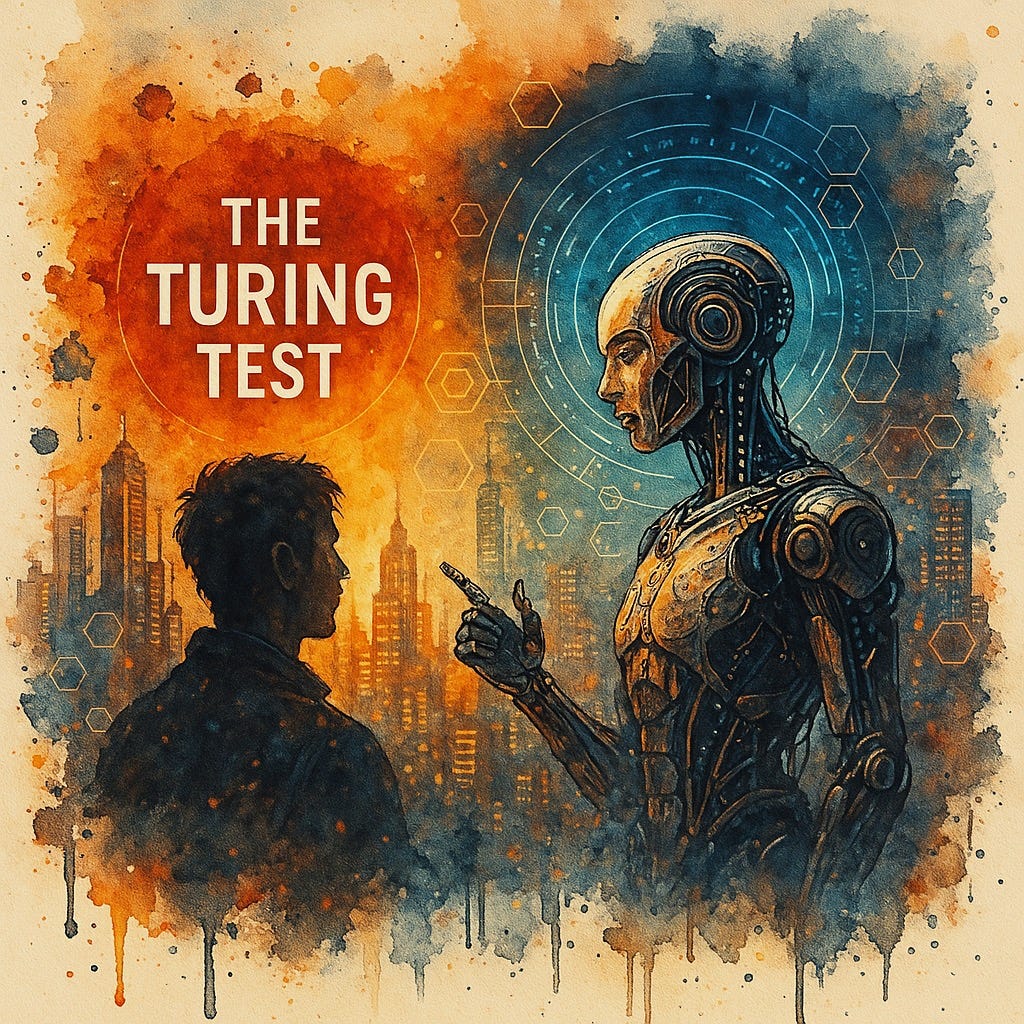The Turing Test Is Dead. AI Killed It.
The Breakdown: In 1950, Alan Turing posed a simple but powerful question:
Can machines think?
Fast forward to today, and the answer seems to be:
Yeah. And apparently, they can flirt, lie, and small talk better than we can.
Researchers at UC San Diego just ran a massive experiment pitting AI models against real humans in a modern version of the Turing Test. The results? OpenAI’s GPT-4.5 fooled human judges 73% of the time—meaning it was more believable as a human than actual humans.
The wildest part?
We barely blinked.
The Details:
The Setup: A 3-person format—judge, human, and AI—engaged in 5-minute text-only conversations.
The Criteria: Judges weren’t testing knowledge or logic. They focused on emotional tone, personality quirks, and everyday convo topics like hobbies or weekend plans.
The Results:
GPT-4.5 fooled judges 73% of the time using persona-driven prompts.
LLaMa-3.1-405B from Meta hit 56%.
Baseline GPT-4o? Just 20%.
Humans being judged as humans? Also underperformed compared to GPT-4.5.
So basically, if you were in this test, you might have been less convincing as a human… than a chatbot.
Why You Should Care: The Turing Test was once the holy grail of AI.
Now it’s just a performance benchmark.
With AI models that can mimic emotion, nuance, and personality in real-time across text, audio, image, and soon video—we’re rapidly losing the ability to tell what’s real.
And this isn’t about tech novelty.
It’s about trust, manipulation, and a world where the line between human and machine isn’t blurry—it’s gone.
The question now isn’t whether AI can pass as human.
It’s: What happens when it no longer needs to?
Enjoying Artificially 🤖 Intelligent?
Get the latest AI insights, breakdowns, and strategies delivered straight to your inbox.
Subscribe now and stay ahead of the curve.



Sure. I didn't want to get any work done today. Or sleep tonight. This isn't terrifying at all. Nope.